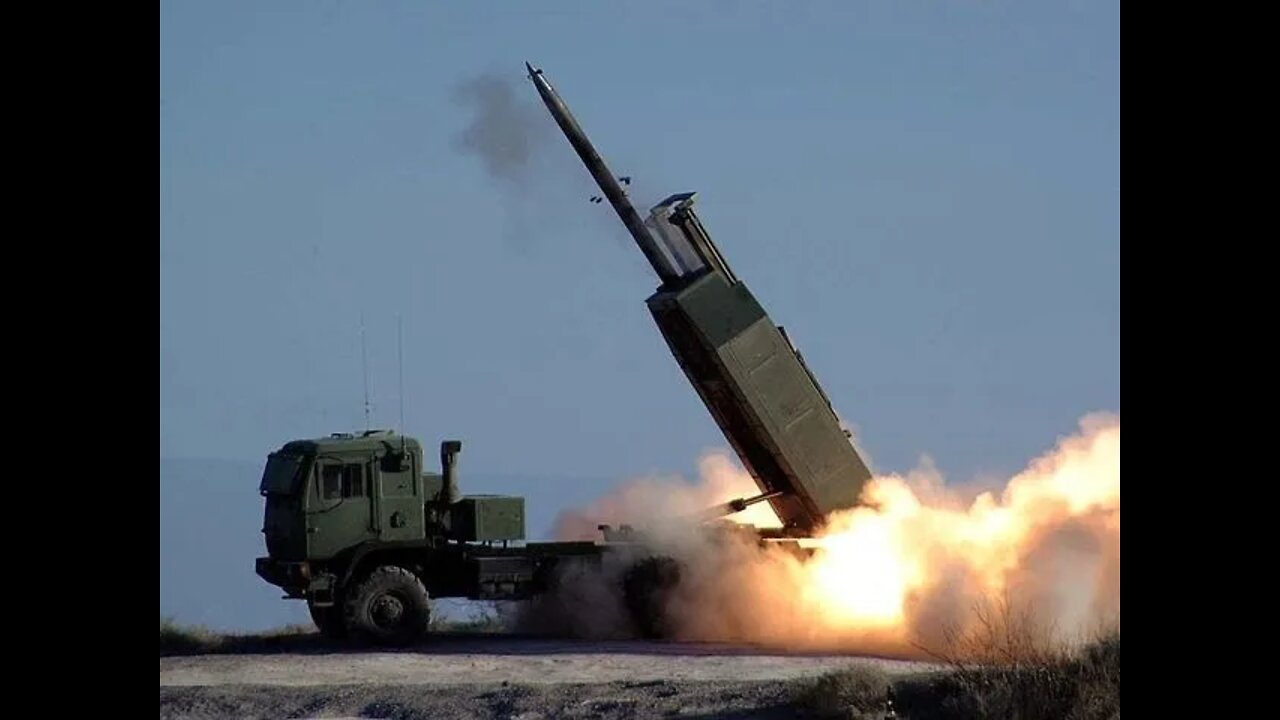Premium Only Content

Why HIMARS Will Be a Game Changer in Ukraine
America has sent M142 HIMARS to Ukraine. Himars vs Smerch. HIMARS vs Uragan.
A little update on equipment being sent to Ukraine. Great news. HIMARS is coming! I’ve been eagerly awaiting HIMARs appearing for weeks because it is the best rocket system in the world. The US is sending four in the first stage—it will take three weeks to train Ukrainians how to operate it. They will then be assessed and more sent at a later date.
HIMARs is great—it is technologically decades ahead of the Russian counteraprts—the Uragan and Smerch. The two images here show that they use optical sights—and the Uragan needs to adjust elevation by turning wheels. Even the outriggers need to be lowered and emplaced by hand.
Then there’s the reload time. For HIMARs it is just five minutes. For Uragann—20 minutes. Smerch—it takes a team of five people 40 minutes to reload. Reloading is done via trucks bringing ammo to resupply. The HIMARs exhcnages their pods quickly because of built in cranes.
This means that Russian systems can fire one volley per hour at the most. The HIMARs can stop, set up and fire in just one minute. So it can fire 5 to 6 volleys an hour.
Why is this a bad thing? Because it takes over 10 minutes to prepare a launch site and sight the launchers. It also means tthat when firing dumb rockets, the accuracy is poor. In the case of the Smerch, the CEP is 170 meters—so 50 percent of rockets will hit a 170 meter radius of the target.
US Systems—a CEP of just five meters. Why? Because HIMARS uses a secret tool called the keyboard to aim. The missiles fired by HIMARS are GPS guided, aimed using the universal fire control system
So, now let’s look at the munitions in use. So, originally, HIMARs and the MLRS system used by the US could operate a wide variety of rockets and projectiles. Some, like the M26 are being withdrawn from service—the M26 was unguided, cluster munitions. The US and NATO don’t have any M26 in their active stockpiles, though may still have some in storage.
The M30 features M101 cluster ammunition and the M30A1 carries 160,000 tungsten balls. It is like a giant rocket launched shotgun blast. The standard M30s are being replaced by the M30A1.
The M31 and M31A1 are variants of the M30 with high explosive warheads.
Now the US has said it isn’t going to supply the longer range ATACMS missiles. Which would have the range and capacity to strike pretty far within Russia.
So—Ukraine’s supply will be the M30A1, the M31 and the M31A1 missiles.
So, let’s talk range—officially, HIMARs systems that Ukraine will be sent have a range of approximately 70km. However, I have heard they actually have a range further than that that is undisclosed.
So, the HIMARs is basically a game changer. Depending where it is positioned in country, it covers a wide track of land. Let’s look at an operational situation.
Use a drone to spot a Russian position—let’s say, tanks being refueled. HIMARS can be ready to launch in just a minute. Fire at it with pinpoint accuracy and wipe it out. Reload in five minutes ready to hit the next target spotted by the drone—say, a command post. Bang! Gone.
But what about counterfire? There is little risk. These fire and move quickly. As soon as Russia has calibrated its own Smerch and Uragan’s, the HIMARs can be long gone to a different point, ready to fire again.
These are game changers. They cover a lot of range, carry a lot of firepower and can strike fast and hard with pinpoint accuracy. A squad of HIMARS system moving around can cover an entire frontline.
However—Ukraine needs more than four for this to be effective. Four means they will need to be used more strategically and Ukraine will need to decide where to deploy them for best use. But hopefully more get sent.
I hope you enjoyed this video. If you did, please like and subscribe. Thanks very much.
-
 2:11
2:11
Suchomimus
2 years agoBM-21 Grad Destroyed
6043 -
 59:29
59:29
State of the Second Podcast
4 days agoAre We Losing the Fight for Gun Rights? (ft. XTech)
8 -
 DVR
DVR
The Nima Yamini Show
2 hours agoTragedy in Germany 🇩🇪 Suspected Terror Attack at Christmas Market – LIVE Updates from Germany
3.68K7 -
 10:52
10:52
Evenout
2 hours ago $0.13 earnedTIME TRAVELLING ON THE ESCALATOR TWIN PRANK!
1.35K1 -
 5:43:44
5:43:44
Scammer Payback
6 hours agoCalling Scammers Live
60.3K9 -
 LIVE
LIVE
Barry Cunningham
3 hours agoWATCH LIVE: James O'Keefe, Gen. Michael Flynn,, Byron Donalds, PBD & More At AmericaFest!
944 watching -
 2:00:10
2:00:10
Twins Pod
6 hours agoYouth Pastor Confronts People Possessed By DEMONS! | Twins Pod - Episode 44 - Drew Hernandez
35.2K11 -
 1:37:40
1:37:40
The Quartering
6 hours agoShutdown Watch, Biden Dementia Bombshell, Madison Shooter Had An Accomplice & Much More!
73.7K33 -
 26:58
26:58
Stephen Gardner
5 hours ago🔥The Trump-Musk fight EXPLAINED, HUGE White House COVER-UP EXPOSED, Congress Tried To SCREW America!
46.3K34 -
 LIVE
LIVE
Right Side Broadcasting Network
8 days agoLIVE: TPUSA's America Fest Conference: Day Two - 12/20/24
4,376 watching